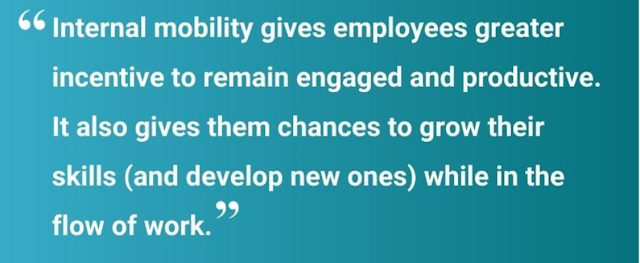Consequences on Globalization towards the talent mobility in Developing countries
“Human talent is a key economic resource and a source of creative power in science, technology, business, arts and culture and other activities. “
Talent has a large economic value, and its mobility has
increased with globalization, the spread of new information technologies and
lower transportation costs. Well educated and/or talented people are often more
internationally mobile than unskilled workers.
Individuals from developing countries are increasingly
meeting the global demand for talent. This is the case of medical doctors, University
lecturers, & other professionals from the Sri Lanka, Caribbean,
Sub-Saharan African, countries or the Philippines, information technology
experts from India, Taiwan, and,China, engineers and mathematicians from the
former Soviet Union, indigenous singers, from Africa, professionals and writers
from Latin America and others.
Does talent mobility harm developing countries?
Clip 01Categories
of talent (plan to add video clip)
This section offers a classification (taxonomy) of different
types of talent according to occupational characteristics and work relations
(e.g. self-employed and employee). Different types of talent can have a differentiated
development contribution. Some contribute directly to wealth creation, others
to technological advancement, and others to cultural activities. The
classification goes as follows:
I)
Technical talent
ii)
Scientists and academics
iii)
Professionals in the health sector: medical doctors and nurses
Technical talent
Scientists and academics
Professionals in the health sector: medical doctors and nurses
Pros of
Talent Mobility:
 |
| Figure 02 |
1.
Skill Enhancement: Employees exposed to different roles and responsibilities in new
locations gain a broader skillset and become more adaptable. This can make them
more valuable to the organization.
2.
Knowledge Sharing : Moving employees between different locations allows for the transfer of
knowledge, best practices, and innovative ideas across the organization.
3.
Increased Diversity: Talent mobility brings diverse
perspectives and cultural experiences, fostering a more inclusive and creative
work environment.
4.
Employee Engagement: Offering mobility opportunities can enhance employee satisfaction,
motivation, and engagement by providing new challenges and learning
experiences.
5.
Leadership Development: Talent mobility is often used as a means of identifying and
nurturing future leaders within the organization, as it exposes employees to
different aspects of the business.
6.
Global Mindset:
Employees who have experienced talent mobility are more likely to develop a
global mindset, which is crucial in today's interconnected business world.
Challenges
of Talent Mobility:
1.
Disruption and Adjustment: Frequent relocations can disrupt employees' personal lives,
including family and social connections. Adjusting to new locations, cultures,
and work environments can be challenging.
2.
Retention Risk:
If not managed effectively, talent mobility can lead to higher turnover, as
employees may feel disconnected from their home location or may prefer
stability over constant moves.
3.
Costs and Resources: Relocating employees involves costs related to housing, travel, and administration.
Additionally, resources are required to plan and manage relocations.
4.
Work Disruption:
The process of moving employees can lead to temporary disruptions in work,
impacting productivity and team dynamics.
5.
Skill Mismatch:
There's a risk that an employee may not have the necessary skills or expertise
for a new role in a different location, which can lead to performance issues
and dissatisfaction.
6.
Cultural
Challenges: Cultural differences can lead to misunderstandings and
miscommunication, potentially affecting teamwork and collaboration.
Mitigation
Strategies:
To maximize
the positive impacts and minimize the negative effects of talent mobility, Sri
Lanka can consider implementing various strategies:
1.
Skills
Development: Invest in education, training, and skills development programs to
retain and attract talent within the country.
2.
Diaspora
Engagement: Actively engage with the Sri Lankan diaspora to harness their
expertise, investments, and networks for the country's benefit.
3.
Investment
in Research and Innovation: Promote research and innovation within the country
to create an environment that attracts and retains skilled professionals.
4.
Labor
Market Analysis: Conduct regular labor market analyses to identify skill gaps
and areas where talent mobility could potentially lead to shortages.
5.
Collaboration with Host Countries: Establish partnerships with host
countries to ensure that talent mobility is mutually beneficial and includes
mechanisms for knowledge sharing and technology transfer.
Conclusion
In
conclusion, talent mobility is a crucial aspect of today's workforce. By
embracing talent mobility, organizations can provide employees with diverse
career opportunities and retain top talent. This benefits both the employee and
the organization, as it leads to increased job satisfaction, productivity, and
innovation.
However,
implementing talent mobility programs can come with its own set of challenges.
It requires a commitment from leadership, effective communication, and a
willingness to adapt to changing needs. By addressing these challenges head-on,
organizations can overcome them and reap the rewards of a successful talent
mobility program.
To ensure
success, it's important to follow best practices for talent mobility, such as
providing employees with development opportunities, creating clear career
paths, and leveraging technology to support mobility. By doing so,
organizations can create a culture that values talent mobility and positions
themselves for long-term success.
In summary,
talent mobility is not just a buzzword, but a critical component of a thriving
workforce. By prioritizing talent mobility, organizations can attract and
retain top talent, increase employee satisfaction, and drive innovation. Let's
embrace talent mobility and unlock the full potential of our workforce!
References
Bergman,
M. (2003) ‘Taxation, Inequality and the Allocation of Talent’, SSE/EFI Working
Paper Series in Economics and Finance 522.
D’Costa,
A.P. (2004) ‘Globalization, Development, and Mobility of Technical Talent: India
and Japan in Comparative Perspective’, WIDER Research Paper 2004/62. Helsinki:
UNU-WIDER.
Figini,
P. and E. Santarelli (2005), Openness, Economic Reforms, and Poverty: Globalization
in the Developing Countries, Journal of Developing Areas, forthcoming.
Fosu,
A. (2004), The Social Impact of Globalization: The Scope for National Policies,
in Lee, E. and M. Vivarelli (eds.), Understanding Globalization, Employment
and Poverty Reduction, Palgrave Macmillan, New York, pp. 327-48.
Gros,
J.B. (2004), Labour Demand of Developing Countries in a Decade of Globalization:
A Statistical Insight, in Lee, E. and M. Vivarelli (eds.), Understanding
Globalization, Employment and Poverty Reduction, Palgrave Macmillan, New
York, pp. 107-39.
O’Connor,
D. and M. R. Lunati (1999), Economic Opening and the Demand for Skills in
Developing Countries: A Review of Theory and Evidence, OECD Development Centre
Technical Papers no. 149, OECD, Paris.
Solimano,
A. (2004a) ‘Globalizing Talent and Human Capital: Implications for Developing
Countries’, in Annual World Bank Conference on Development Economics for
Europe, Papers and Proceedings, June, Oslo. Also Macroeconomics of
Development Working Paper 15 (2003), Santiago: ECLAC.
Vivarelli,
M. (2004), Globalization, Skills and Within Country Income Inequality in Developing
Countries, in Lee, E. and M. Vivarelli (eds.), Understanding
Globalization,
Wood,
A. and C. Ridao-Cano (1999), Skill, Trade and International Inequality, Oxford
Economic Papers, vol. 51, pp. 89-119.






Talent mobility benefits both the employee and the organization as it leads to increased job satisfaction, productivity and innovation. Very important and Interesting Blog.
ReplyDeleteFor the countries like srilanka with unstable economy led badly by talent mobility as you have reason out
ReplyDeleteyes, Talent has a large economic value and its mobility has increased with globalization, you have explained it very well ...
ReplyDeleteTalent mobility is common aspect in globalization context. Organization always prefer to hunt talented skils within the country as well as outside the country. Country should also take precautionary action to reduce the vaccum creates through this talent mobility.
ReplyDeleteGlobalization has had a significant impact on talent mobility in developing countries. Here are some of the consequences of globalization on talent mobility in developing countries:
ReplyDelete
ReplyDeleteGlobalization's impact on talent mobility in developing countries is two-fold. While it offers opportunities for skilled individuals to access diverse job markets, it can also lead to brain drain, where countries lose essential human capital. Balancing these effects requires strategic policies that encourage knowledge retention and skill development, ultimately fostering sustainable growth
In today's workforce, talent mobility is critical. Embracing it enables firms to provide diverse career pathways to employees, hence keeping key staff. This improves employee and organizational job happiness, productivity, and innovation.
ReplyDeleteHuman talent is a key economic resource and a source of creative power in science, technology, business, arts and culture and other activities
ReplyDelete